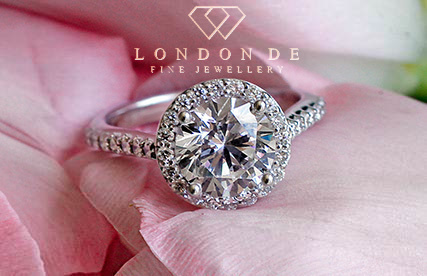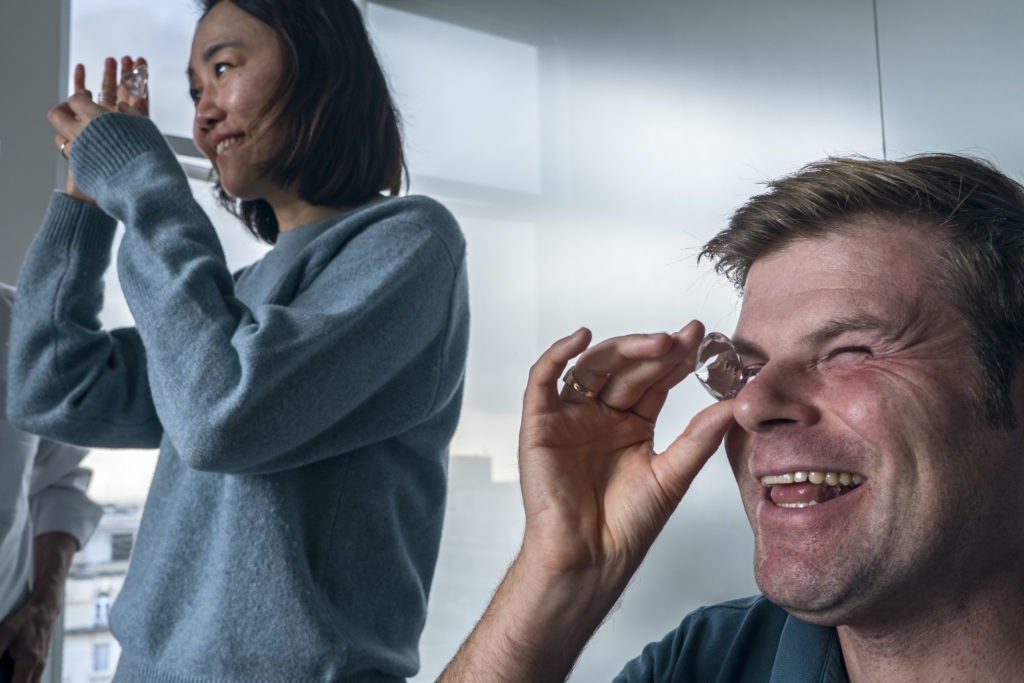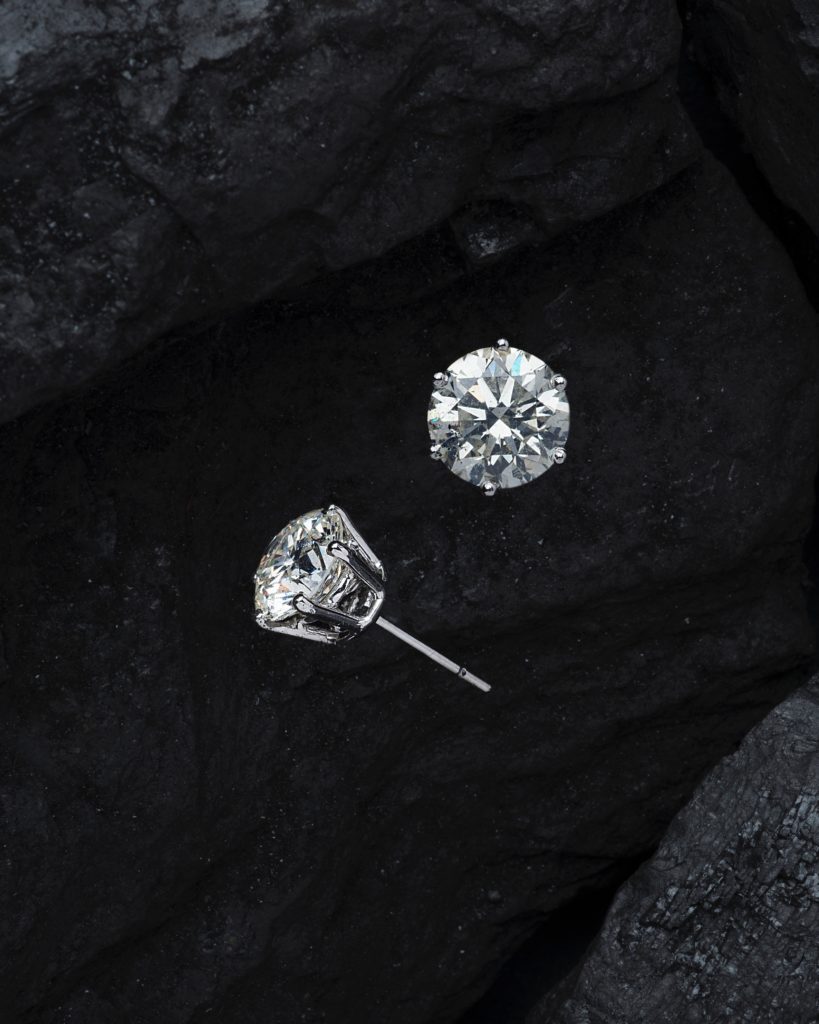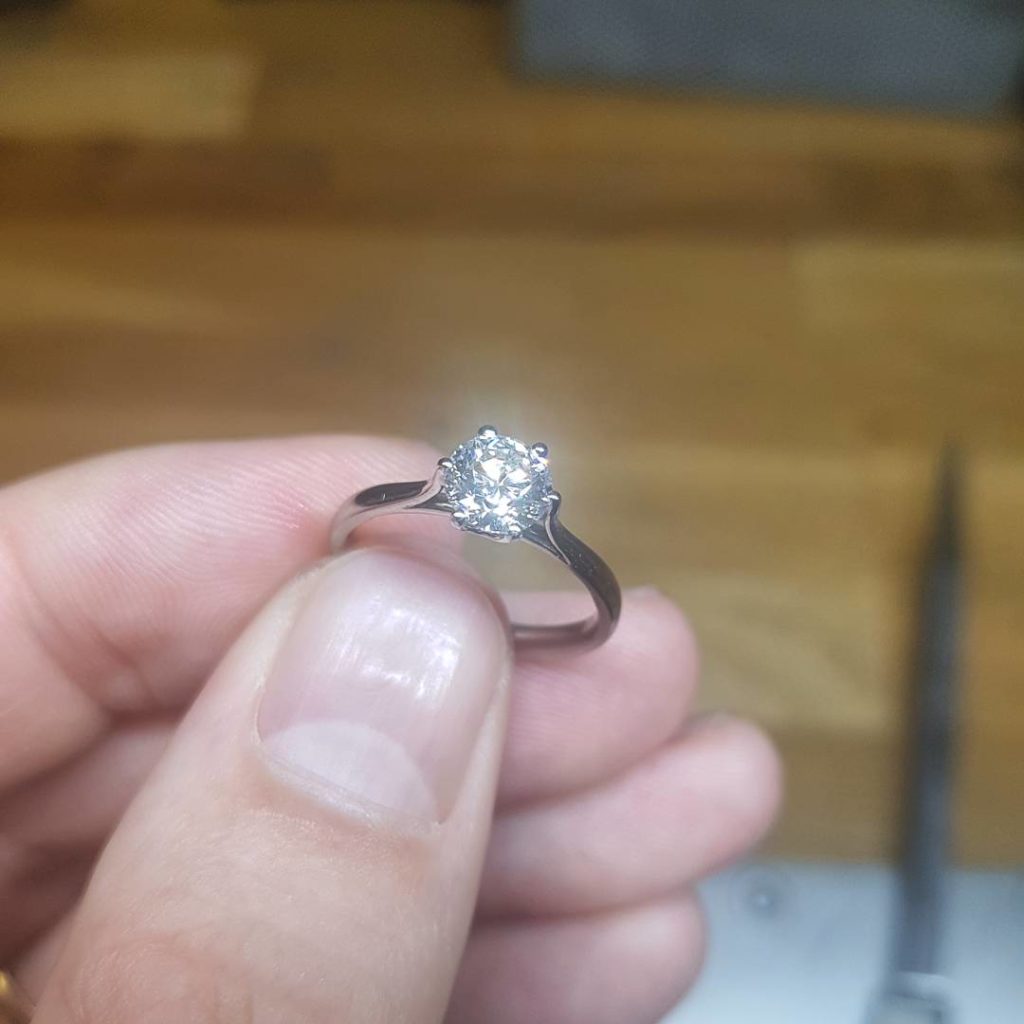How to tell if a diamond is real?
The best way to determine whether a diamond is real or not, is of course, to take it to a professional gemmologist or jeweller; however, we understand just how exciting it is to know that you could possibly own one of the world’s most luxurious materials. So, if you’re too curious to wait, these are the tests that you can do at home to determine whether your diamond is real or not.

1) Its setting
If the diamond in question is already in a piece of jewellery, the material that it is set in is a great indicator as to whether it is real or fake. As diamonds are incredibly valuable, they will have been set within high quality materials such as platinum, white or yellow gold. Markings on the jewellery will tell you what quality the material is and if you see any of these then that’s a good sign. “10K”, “14K”, and “18K” will show the type of gold used whereas “PT” and “Plat” refer to platinum. However, if you can see a “C.Z.” engraving, then the gemstone is a cubic zirconia, and not a real diamond.
2) The sparkle
There’s a lot to be said about the unique way a diamond reflects light, particularly when compared to a fake one. Therefore, a great way to determine a diamond’s authenticity, is to simply study it underneath a lamp. Inside a real diamond, the light will be bright white/grey (known as brilliance) whereas, fake diamonds will show a colourful internal sparkle.

3) Take a closer look
Natural diamonds take millions of years to form and along the way, they might have picked up some imperfections. Using a loupe (a jeweller’s magnifying glass, which can be easily purchased), take a closer look at the gem. Unless the diamond is incredibly rare and internally flawless, there will be little inclusions and flaws visible within the stone.
While your studying the gem up close, also examine what the edges look like. Real diamonds are cut by expert craftsmen and their edges will be straight and sharp.
If you trying to determine a loose stone then these tests will help.

4) The Water Test
Diamonds have a naturally high density which, when placed in water, makes them sink. Conduct the water test with just a glass of water to tell if the diamond is real. If the stone floats on or near the surface, then it is not a diamond.
5) The Fog Test
Diamonds are very good at dispersing heat quickly and effectively, which can also be used to determine its authenticity. Ensuring that the stone is clean of any oils, simply breathe on the flat surface and observe the fog. The longer the fog takes to clear, then the more likely it is that the stone isn’t real, as a genuine diamond will disperse the fog within just one or two seconds.

6) The Transparency Test
The key to a diamond’s brilliant sparkle is its ability to refract light in various directions. Using a newspaper, place the diamond flat-side down in the middle of a word. A real diamond’s light refracting qualities will mean that you cannot read what is printed underneath. If you can read the word, or even see any of the black print, then it is likely that you’re not looking through a diamond.
Alternatively, this test can be done by drawing a small dot onto a white piece of paper and placing the stone on top. If the diamond is real, then the spot will disappear.
London DE offer a wide range of diamonds and can handcraft any bespoke piece to order. Get in touch with them today to arrange a free consultation and to find your perfect bespoke piece.
Visit their blog to explore similar articles.
By Holly Johnson


